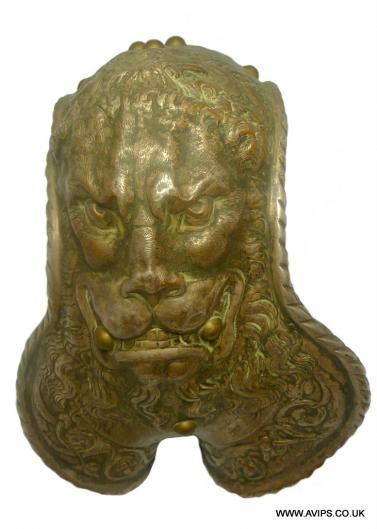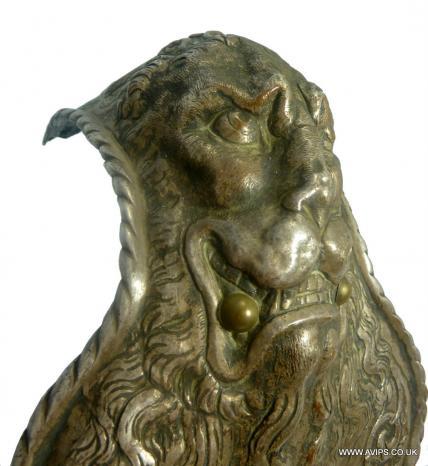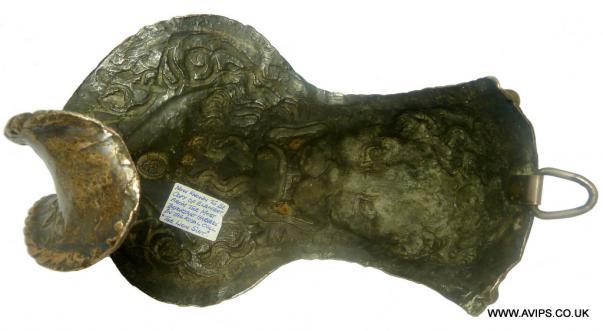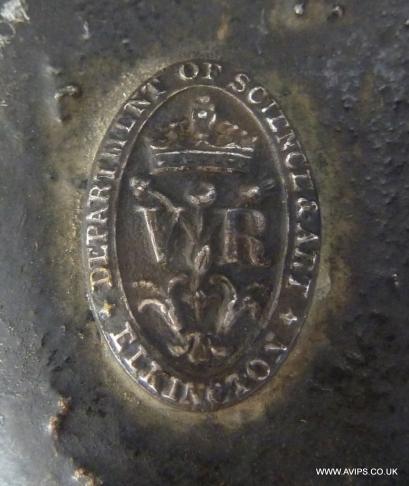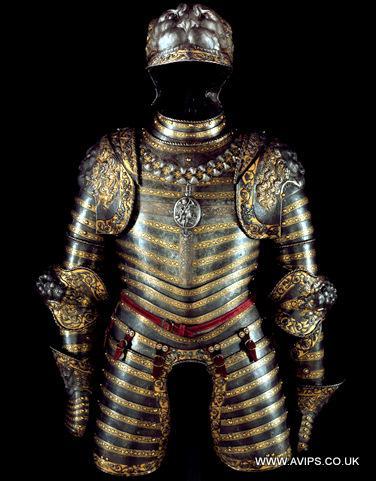SCARCE 19TH CENTURY ELECTROTYPE COPY OF THE FAMOUS LION ARMOUR 16th CENTURY ORIGINAL BY ELKINTONS FOR THE SOUTH KENSINGTON ( V&A ) MUSEUM
The lions armour is an exotic parade armour, to exalt a monarch’s heroic aspect. It is in keeping with the "Grande maniera" style, which was developed by Milanese armourers from 1530 onwards and inspired by the equipment worn by warrior heroes in Classical Antiquity. The armour from which this couter is copied was the work of Giovanni Paolo Negroli (1513 - 1569) of Milan, Italy, who excelled at making decorations in relief (repoussé and chasing) adorned with damascene (gold and silver inlay).
The original armour was made for King Francis I (1494 - 1547). The theme of the lion, king of the beasts and a symbol of manly virtues, feature on his helmet, shoulders, elbows and hands. It is believed to have been created between 1540 and 1545.
In 1806, the original armour was added to the collections of the Artillery Museum, the forerunner of the Army Museum (Les Invalides) where it can still be viewed.
This particular electrotype copy of one of the original couters of this magnificent armour is in great condition. All rivets are still present and it has a D shaped buckle to make wall mounting and display easy. Some of its thin layer of silver plating remains with the sections around, rope edging, the eye pupils and on the tip of the nose showing the underlying copper. The item has two small dents in the mouth region of the Lion underneath the nasal which could either be from some damage to this piece or merely replica damage on the original from which is this an exact copy. The final photo shows the complete armour as currently displayed in Les Invalides, Paris. On the inside is the Messrs. Elkington Mark in its original placement proving provenance.
During the electrotyping process a mould was taken of the original object. In this mould a copper type pattern was electroformed. From this type pattern subsequent moulds were created in which electrotypes were formed. This dish was therefore electroformed in copper from moulds made from a type pattern which itself was electroformed in a mould of the original. The copper electrotype was then electro-gilded.
Made from copper, this electrotype was silvered and oxidised using a technique invented by a Belgian in the 1830s. The South Kensington Museum (V&A), quickly grasped the educational potential of this new technique and employed Elkington's and Franchi & Son of Clerkenwell to take moulds of historic and modern objects in the Museum (at their own risk), create copies in a base metal and then electroplate them. These could be sold freely as reproductions, with a gold, silver or bronze finish, provided they bore the South Kensington Museum's official stamp. Franchi and Son was acquired by Elkington & Co in 1874.
We will provide a photocopy from the original catalogue of the collection of electrotypes available to order via the museum. published in 1870, and which lists this particular object d'art.
An extract from this book reads
'56.47. ITALIAN. - ARM PIECES (two), repoussee or beaten and cheased work; from the suit known as the " Armure aux Lions," said to have belonged to Francis 1. 16th century. Original in the Musee d'Artillerie, Paris. Messrs. Franchi & Son.
The couters were originally sold in pairs, but we only now have this one. It measures 10cm wide at the face of the lion expanding into 16cm at the widest part of the wing which wraps around the arm tapering to 6cm. In its 3D form it is about 24 cm by 14cm.
A scarce item and given you will never own the original, this is a good item to have in your armour collection. For display use only.
Code: 53247

